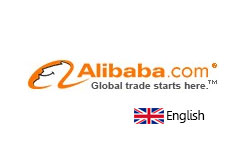Analysis of Types and Common Colors of Gypsum Board
1、 The main types of gypsum board
plasterboard
Features: The sandwich is made of gypsum slurry, and both sides are covered with paper. It has a light texture, high strength, fire resistance, moth resistance, and is easy to process.
Category:
Ordinary paper faced gypsum board: used for interior walls, partitions, and ceilings, suitable for places without special requirements.
Waterproof paper faced gypsum board: The board core and protective paper have undergone waterproof treatment and are suitable for rooms with high humidity, such as bathrooms and kitchens.
Fire resistant paper faced gypsum board: mixed with refractory materials and fiberglass, suitable for places that require fire prevention (such as kitchens, living rooms, bedrooms).
Paperless gypsum board
Features: Using building gypsum powder as the main raw material and fiber as the reinforcing material, eliminating the need for protective paper, the comprehensive performance is superior to paper faced gypsum board.
Application: Suitable for the entire application range of paper faced gypsum board, and has been expanded.
Decorating gypsum board
Features: Made mainly from building gypsum and mixed with fiber materials, it has various patterns and decorations, suitable for mid to high end decoration.
Category:
Ordinary decorative gypsum board: used in places with low air humidity such as bedrooms, offices, and living rooms.
Moisture resistant decorative gypsum board: used in places with high air humidity such as kitchens and toilets.
Gypsum hollow strip board
Features: Made mainly from building gypsum, mixed with lightweight fillers or fiber materials, and processed without the need for keel during installation.
Application: Mainly used for interior walls and partition walls.
GRG
Features: Made mainly from building gypsum and mixed with fiber-reinforced materials, it has a higher flexural strength than paper faced gypsum board.
Application: Can be used for interior walls and partitions, and can also replace wood in furniture production.
Gypsum sound-absorbing board
Features: Based on decorative gypsum board and paper faced gypsum board, with cylindrical holes penetrating the front and back of the gypsum board, and sound-absorbing material pasted on the back.
Application: Suitable for places that require sound absorption, such as concert halls and conference rooms.
Positioning point gypsum board
Features: Set positioning points on the surface of gypsum board for easy installation and fixation.
Application: Suitable for places that require precise installation.
2、 Common colors of gypsum board
pink
Type: Fire resistant gypsum board.
Features: It has good fire resistance and is suitable for places that require fire prevention, such as kitchens, living rooms, and bedrooms.
green
Type: Waterproof gypsum board.
Features: Better waterproof performance, suitable for humid environments such as bathrooms, kitchens, balconies, basements, etc.
blue
Type: Moisture resistant gypsum board.
Features: Moisture resistant but not waterproof, good impact resistance and sound insulation performance, suitable for places such as kitchens and bathrooms that require moisture resistance.
grey
Type: Ordinary gypsum board.
Features: Common colors, suitable for general decoration needs, cheap price, high hardness, not easy to deform, commonly used in living room ceilings, background wall shapes, partition walls, etc.
3、 Which color is more common?
Gray gypsum board is a common color.
reason:
Engineering grade application: Grey gypsum board has high hardness and is not easily deformed, making it suitable for engineering grade applications such as complex shaped ceilings and gypsum board walls.
Cost effectiveness: The price is relatively affordable and suitable for large-scale use.
Strong universality: Its non waterproof, non moisture-proof, and non fireproof characteristics make it suitable for general decoration needs and places that do not require special functional treatment.


